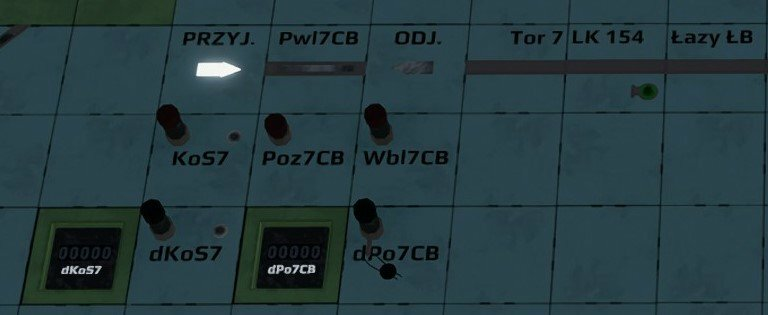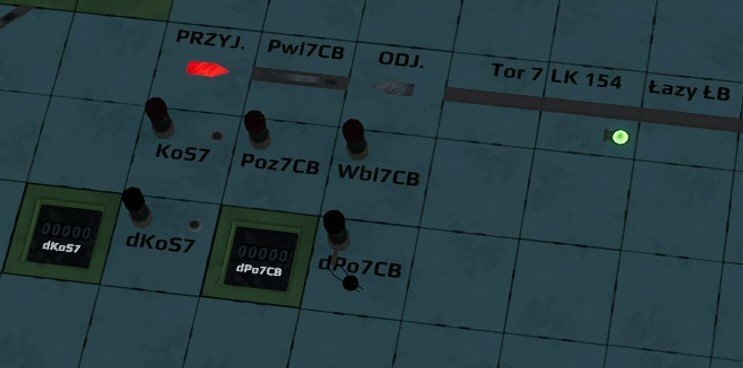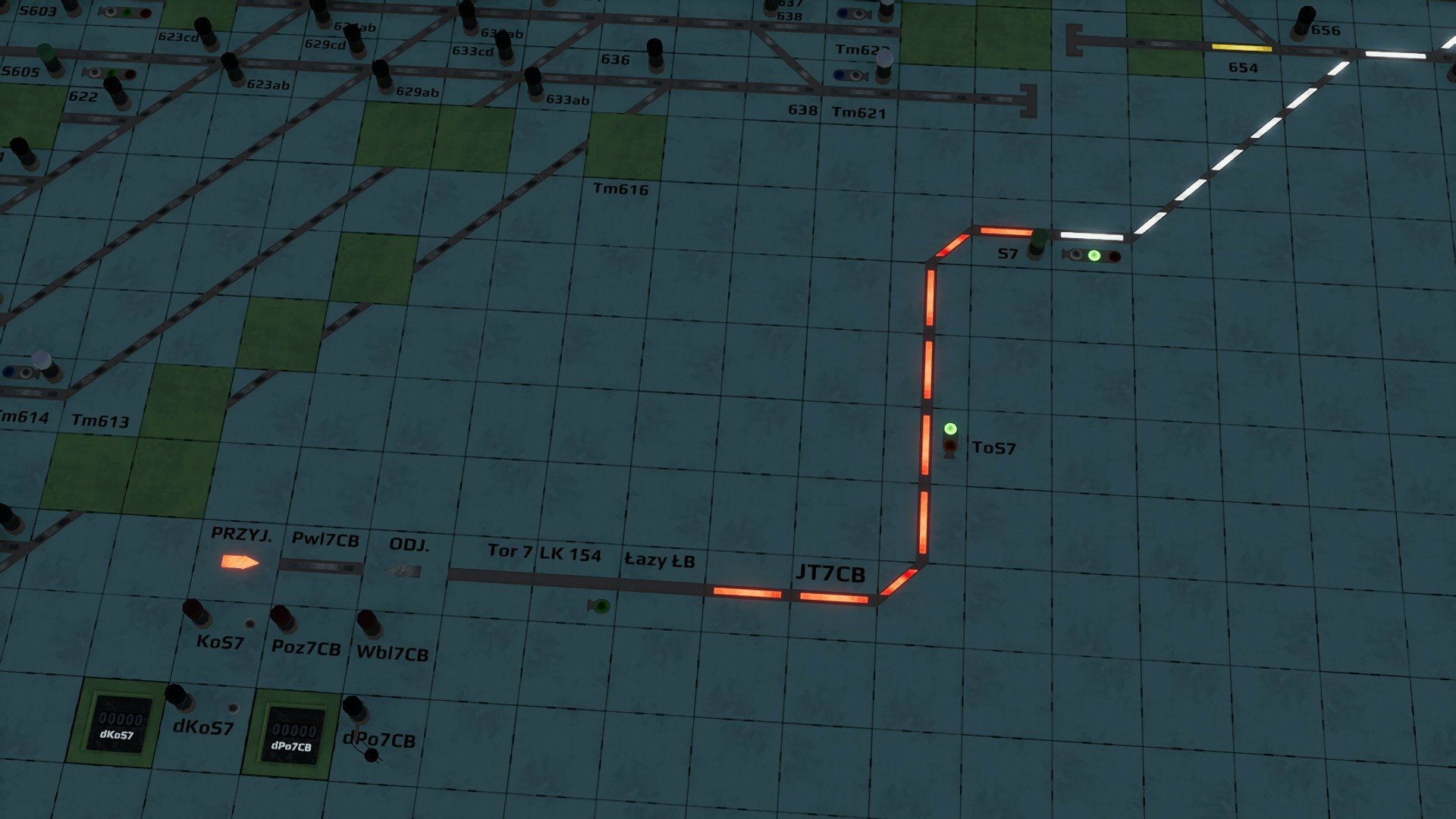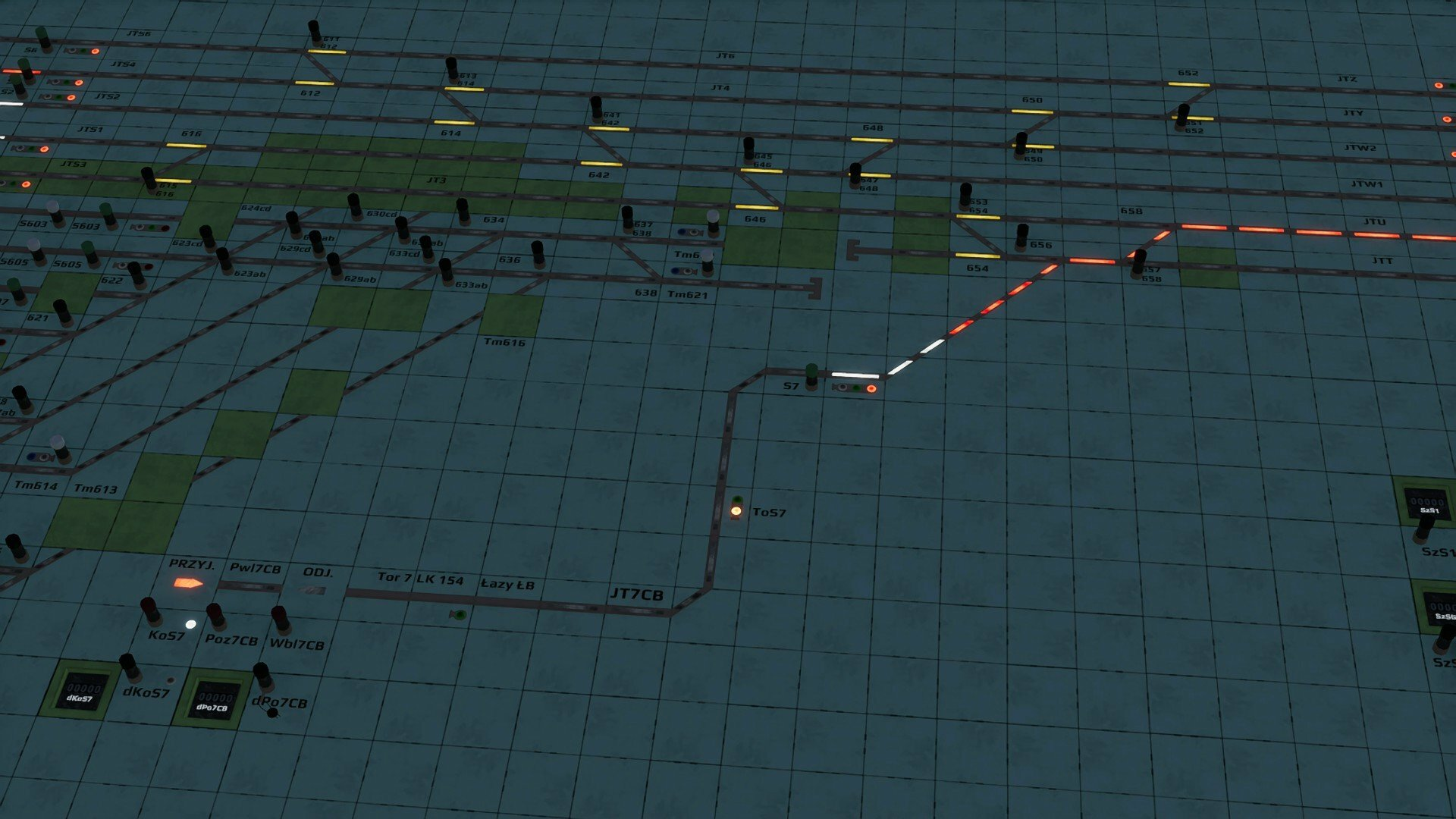Translations:How to operate relay line block equipment/22/en: Difference between revisions
Importing a new version from external source |
Importing a new version from external source |
||
| Line 1: | Line 1: | ||
=== ''Train running from the neighbouring signal box to our signal box'' === | |||
Before the neighbouring signal box can release a train, it also has to bring the line block out of neutral. Permission is requested from us. This is indicated to us by the white flashing end field indicator. | |||
In case the neighbouring signal box does not require the clearance any more and we have not yet given permission, the request can be cancelled by the neighbouring signal box without further action and the end field indicator extinguishes again. | |||
Permission is granted by pressing the "Poz" button. The end field indicator will then display a white steady light. | |||
[[File:318404563 20221224160759 1(2).png|center]] | |||
It is still possible to cancel the activation of the line block in case the train is no longer meant to come. The neighbouring signalman takes back their request first. Afterwards we have to pull the button "Wbl". The line block then changes back to the neutral default state. | |||
As soon as an exit signal in the neighbouring signal box is set to clear, the end field indicator displays a red flashing light. Once the train has passed the exit signal of the neighbouring signal box, the end field indicator changes to a red steady light. | |||
[[File:1256007943 20221224160818 1(2).png|center]] | |||
The trains has entered the block section. The end field indicator is steady red and the block section indicators show "occupied". Our signal has been set to clear already. | |||
[[File:20221224161122 1.png|center]] | |||
Once the train has been through the block section and passed our entry signal, it is time to clear the linie again so that we are ready to accept the next train. | |||
The conditions for clearing the line are exactly the same as for the relay block type C (see above). | |||
[[File:20221224161513 1.png|center]] | |||
Latest revision as of 00:58, 18 April 2024
Train running from the neighbouring signal box to our signal box
Before the neighbouring signal box can release a train, it also has to bring the line block out of neutral. Permission is requested from us. This is indicated to us by the white flashing end field indicator. In case the neighbouring signal box does not require the clearance any more and we have not yet given permission, the request can be cancelled by the neighbouring signal box without further action and the end field indicator extinguishes again. Permission is granted by pressing the "Poz" button. The end field indicator will then display a white steady light.

It is still possible to cancel the activation of the line block in case the train is no longer meant to come. The neighbouring signalman takes back their request first. Afterwards we have to pull the button "Wbl". The line block then changes back to the neutral default state. As soon as an exit signal in the neighbouring signal box is set to clear, the end field indicator displays a red flashing light. Once the train has passed the exit signal of the neighbouring signal box, the end field indicator changes to a red steady light.

The trains has entered the block section. The end field indicator is steady red and the block section indicators show "occupied". Our signal has been set to clear already.

Once the train has been through the block section and passed our entry signal, it is time to clear the linie again so that we are ready to accept the next train. The conditions for clearing the line are exactly the same as for the relay block type C (see above).
